Retro Replay Review
Gameplay
Capone introduces players to a fast-paced shooting gallery set against the backdrop of 1920s Chicago, drawing clear inspiration from arcade hits like Operation Wolf. As the first light-gun game on the Commodore Amiga, it challenges players to dial in precise aim whether they’re wielding a dedicated light gun or simply controlling a crosshair with the mouse. The core loop is straightforward: gangsters emerge from windows, doorways, and hidden corners, and it’s up to you to keep Al Capone’s thugs at bay.
The game’s progression unfolds through horizontally scrolling streets and alleys, punctuated by two memorable indoor set pieces—a TNT-filled warehouse and a bank heist finale. Each area introduces subtle variations in enemy placement and timing, keeping players on their toes. The tension ramps up as more adversaries appear simultaneously, forcing you to prioritize targets quickly to avoid being overwhelmed.
One of Capone’s standout mechanics is the requirement to spare innocents. Women, children, and pets occasionally wander into your line of fire, and a stray shot at an innocent will cost you valuable health or time. This adds a layer of strategy not often seen in light-gun shooters of the era: you must balance rapid fire against careful aim to maintain your score and in-game resources.
Performance-wise, the responsiveness of both the light gun and mouse input is impressively tight for an early-Amiga release. There’s minimal input lag, and the cursor tracks smoothly even when the background is in motion. This precision ensures that the challenge feels fair—mistakes are always on the player’s shoulders, not on clunky controls or erratic detection.
Graphics
Visually, Capone boasts a distinctive pixel-art style that stands out among early Amiga titles. The environments are richly detailed for their time, with period-appropriate signage, lampposts, and brickwork evoking a gritty 1920s metropolis. The color palette leans heavily on earthy tones—browns, grays, and muted reds—that reinforce the smoky, prohibition-era atmosphere.
Character sprites are large and easily readable, which is crucial in a game where split-second aim decides success or failure. Gangsters sport fedoras and pinstripe suits, making them instantly identifiable, while innocents wear more casual attire. Animations are simple but effective: adversaries duck behind cover, reload their weapons, and react realistically when downed.
The two indoor levels—warehouse and bank—demonstrate the game’s ability to shift atmospheres. The siloed, claustrophobic warehouse corridors are bathed in flickering torchlight and strewn with crates, while the bank finale glimmers with polished counters, vault doors, and gold bars. These transitions keep the visual experience fresh throughout the play session.
Even by modern retro standards, Capone’s art direction holds up. It may lack the polish of later arcade-to-home conversions, but there’s a raw charm in its hand-crafted backgrounds and expressive enemy designs. For collectors of Amiga titles, it remains a showcase of what the hardware could achieve in the hands of creative developers.
Story
Capone’s narrative is intentionally minimal, focusing squarely on action rather than deep plot twists. You assume the role of a lone gunman determined to dismantle Al Capone’s criminal empire one street overrun by gangsters at a time. This lean storytelling approach keeps the pace brisk and ensures that players spend more time pulling the trigger than reading exposition.
Despite its brevity, the game effectively conveys the desperation and danger of Prohibition-era Chicago. Background details—like passing newsstands hawking newspaper headlines about gang warfare and distant sirens wailing—imply a city on the brink without bogging down the experience in text. You feel like a vigilante in hostile territory, where every corner might conceal a Tommy-gun-toting hoodlum.
The inclusion of indoor set pieces adds a sense of progression to your crusade. Storming the warehouse hints at discovering bootleg operations, while the bank sequence suggests you’re closing in on Capone’s financial stronghold. Though there’s no spoken dialogue or elaborate cutscenes, these shifting locales craft a rudimentary but effective narrative arc: street to stronghold, rogue to resolution.
For players seeking a character-driven drama, Capone may feel sparse. However, for fans of shoot-’em-ups who appreciate contextual flair, the era-specific setting and environmental storytelling deliver a satisfying backdrop. The sparse plot becomes part of the charm—allowing the action to speak for itself.
Overall Experience
As an early-Amiga title and pioneering light-gun shooter, Capone offers a remarkable blend of arcade thrills and period ambiance. Its simple yet addictive gameplay loop—seek, shoot, spare the innocent, and advance—provides immediate satisfaction. The dual control options (light gun or mouse) accommodate different playstyles and hardware setups, making the game accessible to a wider audience.
While modern gamers may find the difficulty curve steep and the lack of narrative depth a drawback, Capone’s core design remains compelling. Each playthrough is a test of reflexes and restraint, with high replay value for speedrunners and completionists aiming to cleanly clear every stage without collateral damage. The indoor finales serve as high-stakes set pieces that break the monotony of endless street battles.
Collectors and retro enthusiasts will appreciate Capone’s place in gaming history—not only as the Amiga’s first light-gun title but also as an early example of genre adaptation on home computers. Its pixel art, period details, and responsive controls showcase what creative developers achieved with limited resources. Even if it doesn’t reinvent the wheel, it refines an arcade formula in a charmingly rugged package.
In sum, Capone remains a worthwhile experience for anyone intrigued by classic shooters, Amiga nostalgia, or the Roaring Twenties setting. Its blend of straightforward action, distinctive visuals, and historical significance ensures it holds a special place in the pantheon of early home-computer games.
 Retro Replay Retro Replay gaming reviews, news, emulation, geek stuff and more!
Retro Replay Retro Replay gaming reviews, news, emulation, geek stuff and more!
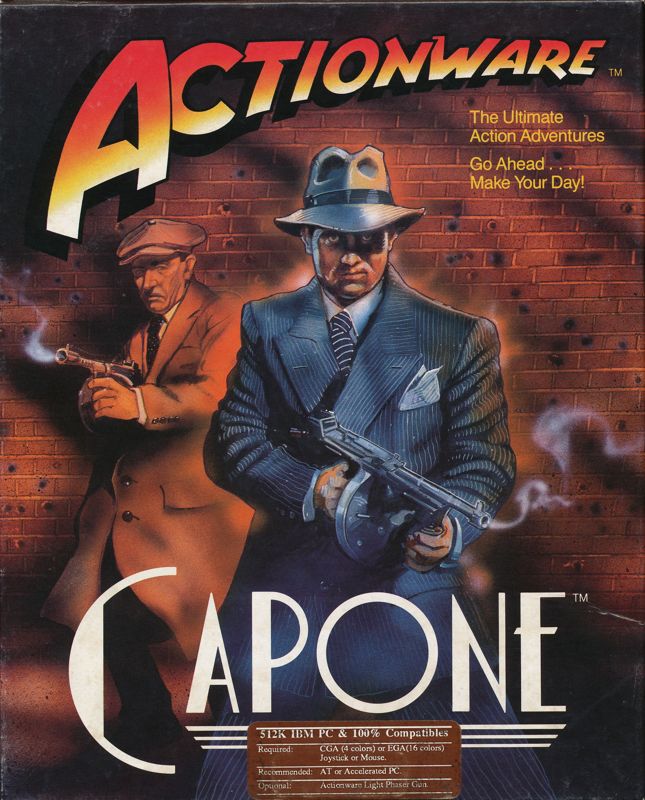
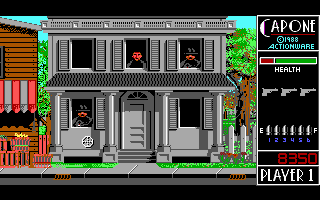
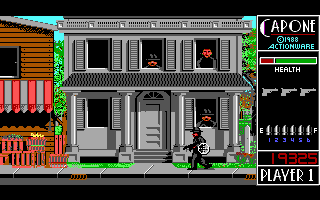
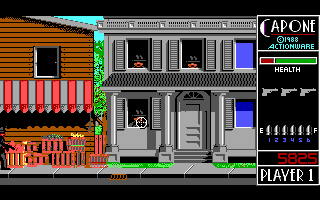
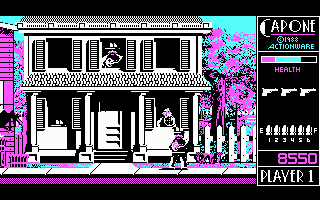
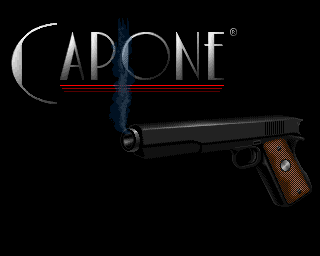



Reviews
There are no reviews yet.